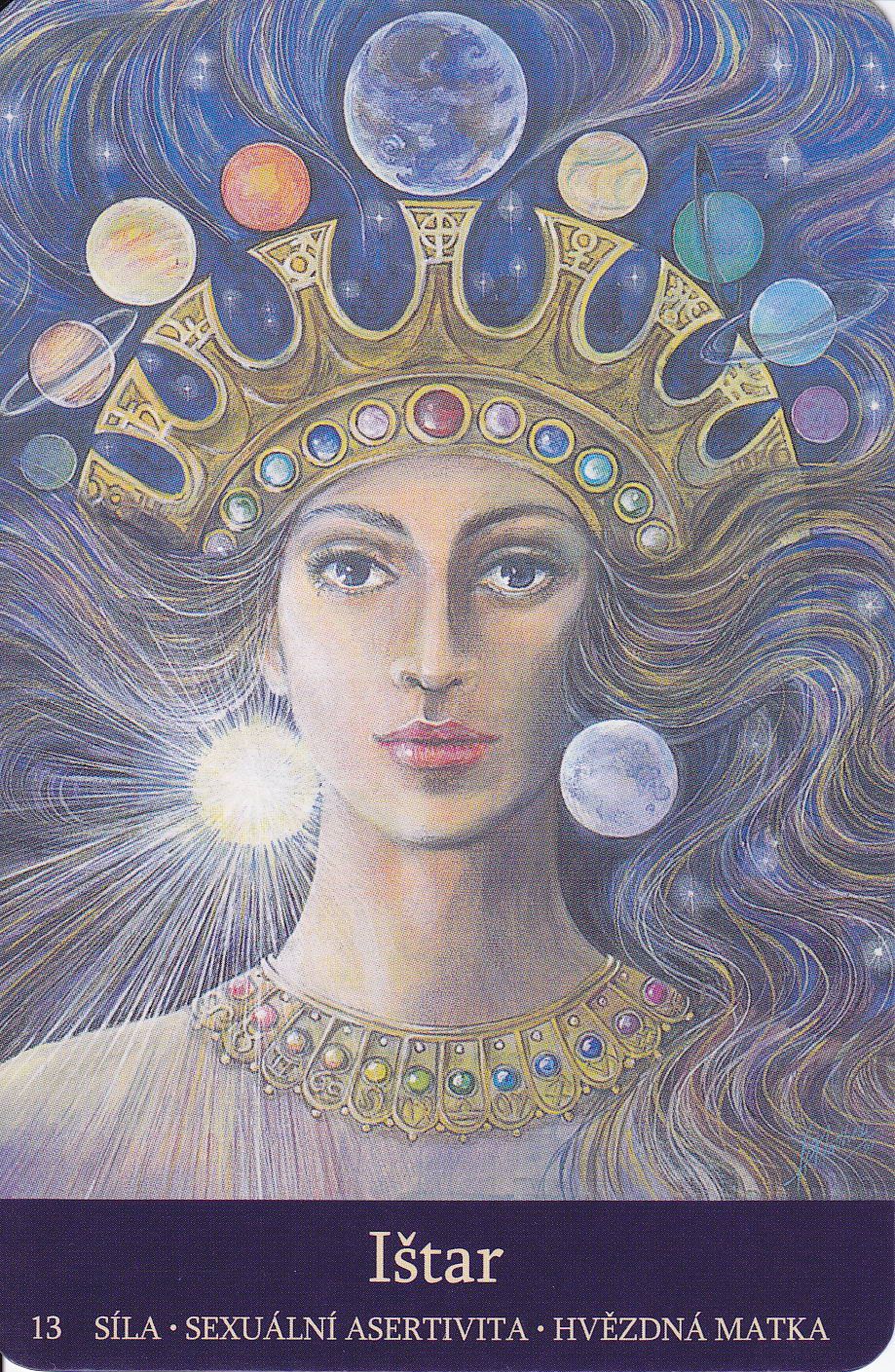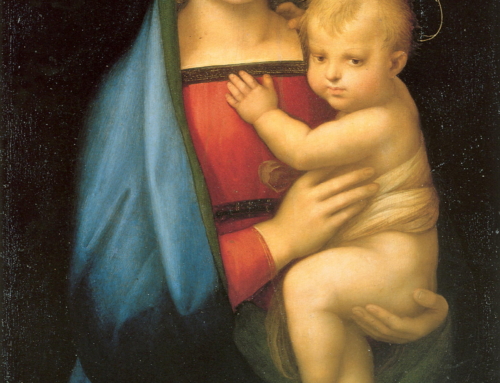The weary old theory that Christianity is just paganism warmed up always circulates around this time of year.
Armchair atheists like to point out the similarity between the word “Easter” and the Near Eastern goddess “Ishtar”. The problem is, the myth of Ishtar had nothing to do with resurrection from the dead. She was the goddess of fertility, and went down into the underworld, but that’s about the extent of the similarity between the myth of Ishtar and the story of Jesus Christ. From Wikipedia, here is the story of Ishtar. See how similar it feels to the gospel account of Jesus’ death and resurrection:
One of the most famous myths[6] about Ishtar describes her descent to the underworld. In this myth, Ishtar approaches the gates of the underworld and demands that the gatekeeper open them:
If thou openest not the gate to let me enter,
I will break the door, I will wrench the lock,
I will smash the door-posts, I will force the doors.
I will bring up the dead to eat the living.
And the dead will outnumber the living.The gatekeeper hurried to tell Ereshkigal, the Queen of the Underworld. Ereshkigal told the gatekeeper to let Ishtar enter, but “according to the ancient decree”.
The gatekeeper let Ishtar into the underworld, opening one gate at a time. At each gate, Ishtar had to shed one article of clothing. When she finally passed the seventh gate, she was naked. In a rage, Ishtar threw herself at Ereshkigal, but Ereshkigal ordered her servant Namtar to imprison Ishtar and unleash sixty diseases against her.
After Ishtar descended to the underworld, all sexual activity ceased on earth. The god Papsukal reported the situation to Ea, the king of the gods. Ea created an intersex being called Asu-shu-namir and sent them to Ereshkigal, telling them to invoke “the name of the great gods” against her and to ask for the bag containing the waters of life. Ereshkigal was enraged when she heard Asu-shu-namir’s demand, but she had to give them the water of life. Asu-shu-namir sprinkled Ishtar with this water, reviving her. Then, Ishtar passed back through the seven gates, getting one article of clothing back at each gate, and was fully clothed as she exited the last gate.
Most ludicrous is the supposition that because the word “Ishtar” sounds like “Easter” they must be linked.
In fact “Ishtar” is of Akkadian origin and Easter comes from Anglo Saxon and the Germanic languages.
Furthermore, in the Romance languages the word for the celebration of Christ’s resurrection is linked back to the Hebrew for Passover “pesach”. Thus in French, “Paques” Spanish “Pacues” and Italian “Pasqua.” The examples can be multiplied.
Thinking Easter is linked to the worship of Ishtar is kind of like saying “Elvis” must be related to the elves in Lord of the Rings. Putting that aside, cynics like to point to the pagan myths of dying and rising gods and they accuse the early Christians of hi-jacking those myths and laying a heavy layer of mythology over the simple Jesus story.
There were, of course, stories of dying and rising gods in the pagan world. Theologian Candida Moss summarizes them:
Dionysius, most commonly thought of as the Greek god of wine, is one such example. He was lured to his death by the Titans, who then boiled and ate him. He was revived by his grandmother, and from his ashes humanity was formed, the Greeks believed.
Farther afield, Osiris – an Egyptian god-king who became ruler of the realm of the dead – was slaughtered before being brought back to life by Isis.
A similar story is found in the case of the Greek goddess Persephone, the daughter of the harvest goddess Demeter. Persephone was carried off to the underworld by the love-struck Hades. Because she ate pomegranate seeds in the underworld, she was permitted to leave only for six months a year.
Her annual resurrection is a metaphor for the changing of the seasons, and many scholars think that stories about dying and rising deities are essentially explanations for the coming of winter.
Then there’s Mithras, an ancient Iranian deity popular among Roman soldiers.
Among the many claims made about Mithras are that he was born on December 25, that adherents to his cult practiced baptism, and that he died and was resurrected.
The problem with the “Christianity stole from Mithraism” is that there is no evidence for the theory, and especially troublesome is the fact that Mithraism post dates Christianity. If there was any borrowing, therefore it is more likely that Mithraism stole from Christianity rather than the other way around.
This blogger takes apart the stupid Easter=Ishtar theory, but the question still remains–did the early Christians like those stories and add their own wonderful tale to the Jesus story? Peter Kreeft takes the theory apart here…(scroll down to his section “Refutation of the Myth theory”.
The main points are these:
- The style of the gospels is totally different from the myth literature of the ancient world. See the story of Ishtar above for an example. That’s myth. The gospels do not sound like that at all.
- The dating of the New Testament document does not allow enough time for myth to develop. Myth originates in oral tradition which changes and grows in a culture for centuries. Even with the latest dates possible the gospels were completed within sixty years of Jesus’ death and resurrection.
- The myth theory relies on there being two levels of the gospel story: a historical cake and the mythological icing. But the gospel texts do not show this stratification or development. The “Jesus is the divine son of God” stuff is integrated into the stories from the beginning and all through the gospel
- The first witnesses of the resurrection were women. In ancient Judaism their witness was not accounted reliable. If you were making up a story you wouldn’t have women be the first witnesses.
- The New Testament itself acknowledges the myth theory and dismisses it–asserting time and again that the gospels are an eyewitness record. For the best scholarly work on the gospels as eyewitness records see Richard Bauckham’s book Jesus and the Eyewitnesses.
- William Lane Craig Knowing the Truth About the Resurrection has summarized the reasons why the gospels are historical accounts dependent on first hand witnesses.
Finally, the fact that there are similarities between the gospel story and pagan stories is not a reason to reject the gospel, but a reason to accept it. C.S.Lewis pointed out that if there were not similarities between the gospels and the stories of antiquity he would be worried. The fact that the gospels echo the themes of death and rebirth, dying and rising are an indication that many peoples have pondered these same themes. The gospel story is different from the myths, Lewis argued, in that the events really happened. The myths were lovely stories that pointed to certain truths. In the gospel the stories came true in human history and that changed everything.
For a longer article on Catholicism and paganism go here.







Leave A Comment
You must be logged in to post a comment.